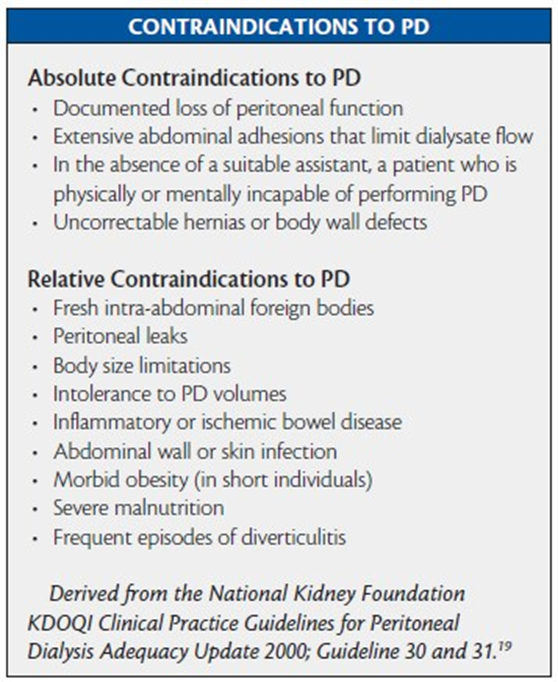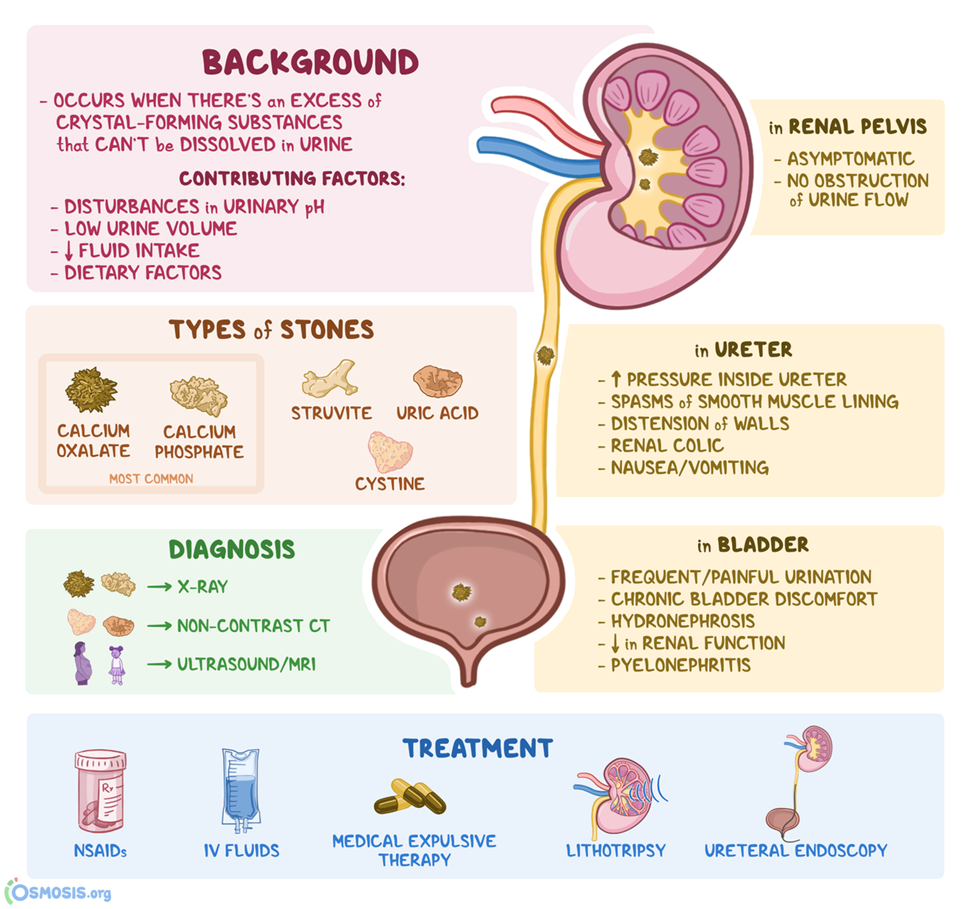A client is diagnosed with chronic kidney disease and needs to begin dialysis. Which condition entered on the client's medical record should the nurse recognize as a contraindication for peritoneal dialysis?
Type 2 diabetes mellitus.
Nephrotic syndrome history.
Latent hepatitis C
Crohn's disease with colectomy
The Correct Answer is D
A. Type 2 diabetes mellitus
Type 2 diabetes mellitus is not a contraindication for peritoneal dialysis. In fact, peritoneal dialysis can be a suitable option for individuals with diabetes who require renal replacement therapy. However, the presence of diabetes may require additional considerations and close monitoring.
B. Nephrotic syndrome history
Having a history of nephrotic syndrome is not a contraindication for peritoneal dialysis. Peritoneal dialysis can be used in individuals with various causes of chronic kidney disease, including those with nephrotic syndrome.
C. Latent hepatitis C
Latent hepatitis C alone may not be an absolute contraindication for peritoneal dialysis. However, the decision to initiate peritoneal dialysis would depend on the overall health status of the client, the degree of liver involvement, and the risk of infection. Close monitoring and appropriate precautions may be necessary.
D. Crohn's disease with colectomy
Crohn's disease with colectomy is considered a contraindication for peritoneal dialysis. Surgical alterations in the abdomen, such as colectomy, can lead to adhesions or other complications that may interfere with the effectiveness of peritoneal dialysis. In such cases, alternative forms of dialysis, such as hemodialysis, may be considered.

Nursing Test Bank
Naxlex Comprehensive Predictor Exams
Related Questions
Correct Answer is D
Explanation
A. Initiate cardiac telemetry:
Cardiac telemetry is not the immediate priority in this case. Kidney stones are more likely to cause severe localized pain rather than cardiac-related symptoms.
B. Administer a PRN dose of a laxative:
Laxatives are not indicated for the management of kidney stones or the associated flank pain. The priority is to address the specific needs related to the possible passage of kidney stones.
C. Implement seizure precautions:
Seizure precautions are not relevant to the sudden onset of severe flank pain in the context of hyperparathyroidism. The focus should be on managing pain, assessing for kidney stone passage, and addressing the underlying cause.
D. Begin straining all urine.
Straining all urine allows for the collection and examination of any passed stones. This information is important for identifying the composition of the stones and guiding further management.

Correct Answer is ["B","D"]
Explanation
A. Use standard precautions and wear a mask:
The use of standard precautions is appropriate for general care to prevent the transmission of infectious agents. However, specific to MRSA, additional precautions are needed. Wearing a mask is generally not necessary unless the client has respiratory symptoms that warrant respiratory precautions.
B. Institute contact precautions for staff and visitors:
This is a correct intervention. Contact precautions involve using gowns and gloves when providing care to prevent the transmission of MRSA. It is important for both healthcare staff and visitors to adhere to contact precautions to reduce the risk of spreading the infection.
C. Explain the purpose of a low bacteria diet:
The purpose of a low bacteria diet is generally unrelated to the management of MRSA. Low bacteria diets are often recommended for individuals with compromised immune systems to reduce the risk of foodborne infections. However, it may not be directly applicable to MRSA management.
D. Monitor the client's white blood cell count:
Monitoring the white blood cell count is a relevant intervention. An elevated white blood cell count may indicate an ongoing infection or an inflammatory response. Regular monitoring helps assess the client's immune response and the potential severity of the infection.
Whether you are a student looking to ace your exams or a practicing nurse seeking to enhance your expertise , our nursing education contents will empower you with the confidence and competence to make a difference in the lives of patients and become a respected leader in the healthcare field.
Visit Naxlex, invest in your future and unlock endless possibilities with our unparalleled nursing education contents today
Report Wrong Answer on the Current Question
Do you disagree with the answer? If yes, what is your expected answer? Explain.
Kindly be descriptive with the issue you are facing.
